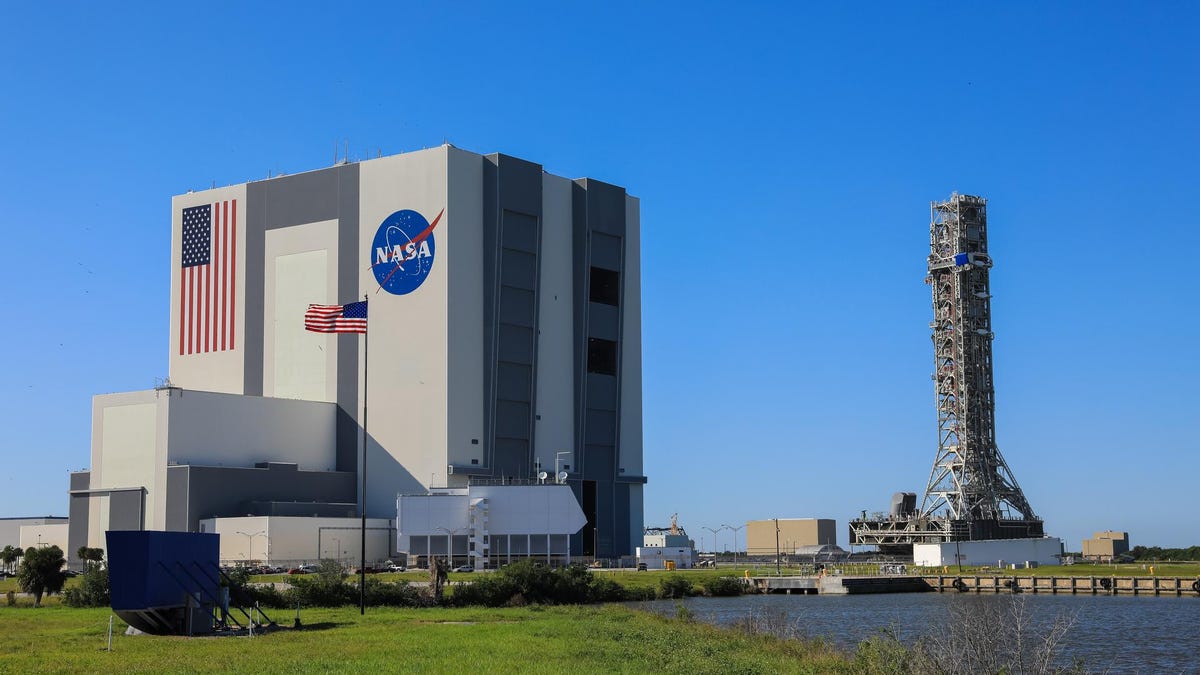NASA Eyes May Launch Date for Historic Artemis I Moon Mission
Artemis I has passed several vital tests in preparation for liftoff, but the next one could make or break the overall mission timeline.

The Artemis I equipment is tucked inside the Vehicle Assembly Building (VAB) at NASA's Kennedy Space Center in Florida. The structure to the right is the mobile launcher for the mission.
NASA on Thursday announced a possible launch date of late May -- which could dip into June -- for its upcoming Artemis I mission, which aims to redirect humanity's eyes to the moon by sending a spacecraft into lunar orbit. The new timeline appears to eliminate the previously hoped-for April launch date.
"April's not a possibility," Tom Whitmeyer, NASA's deputy associate administrator for exploration systems development, said during a briefing. "We're still evaluating the tail end of May." But on the bright side, the agency highlighted that crucial testing of the mission's SLS rocket, conducted at the Vehicle Assembly Building (VAB), is now complete.
Though the team is still analyzing data from the final VAB test, it says Artemis I -- which includes both the SLS rocket and an Orion spacecraft module -- can soon be rolled out to the pad for what's called the "wet dress rehearsal," which involves steps like loading the SLS up with fuel. That'll be an approximately 11-hour trip.
Mike Bolger, NASA Exploration Ground Systems program manager at Kennedy Space Center, says the team is targeting a March 17 rollout at 3 p.m. PT (6 p.m. ET). "It's really going to be a sight," Bolger said, noting the transport loaded with Artemis I will stand 400 feet (122 meters) tall and weigh a total of over 17 million pounds.
Once the wet dress rehearsal is finished, we'll likely have a much better idea of a concrete launch date because "the wet dress rehearsal is a complicated task," Bolger said. Other parameters the team is considering include weather, emphasizing the importance of a daylight launch.
Though uncrewed, Artemis I is poised to be the first in a series of steps that takes NASA back to the lunar surface. It's main goal is to map out an ideal trajectory for the coming years' missions prepared to have astronauts on board. "We're very proud to be part of an integrated Artemis program that will have the first person of color and the first woman on the lunar surface," Whitmeyer said.
"I think that's quite an honor for all of us."

